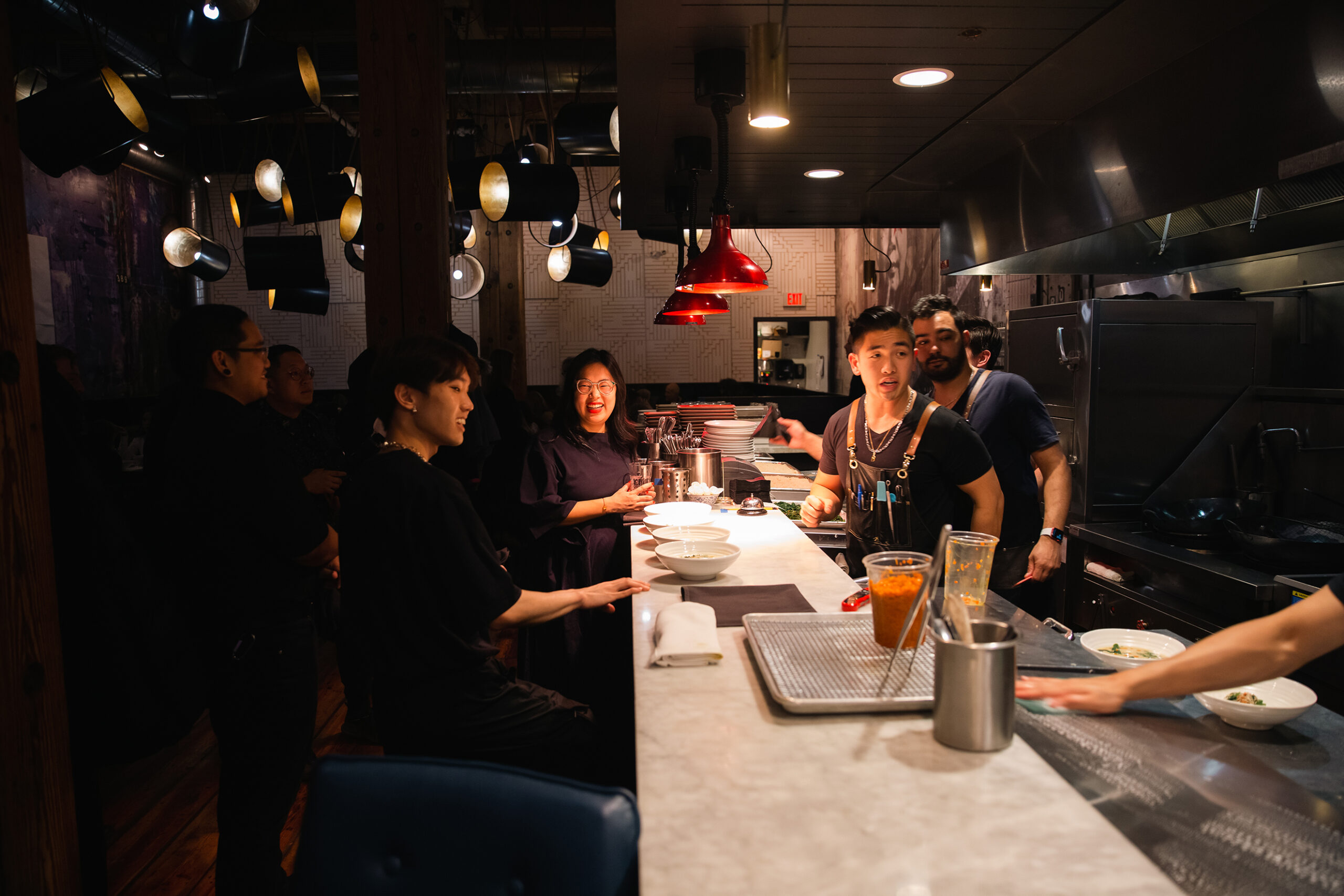Tom yum soup with tomato and kaffir lime oils, Hainanese chicken with sweet soy sauce and roasted-garlic chili paste, soy milk flan with milk tea ginger caramel. For those who have experienced a meal at a care home for elders, this may not seem like a typical dinner menu—but it could be, propose two industrial designers and design educators in a recent research initiative.
With their project One Lovely Hour, Amanda Huynh, assistant professor of industrial design at Pratt Institute, and her collaborator Ranee Lee, associate professor of design at OCAD University, are reimagining how mealtime can bring greater comfort and nourishment to seniors in long-term care.
They presented their work this past January at the DesignTO Festival—Canada’s largest design event, held annually in Toronto—through a dining experience that involved a precision-crafted meal, specially designed dishware, and lively conversation about food, memory, aging, and design.
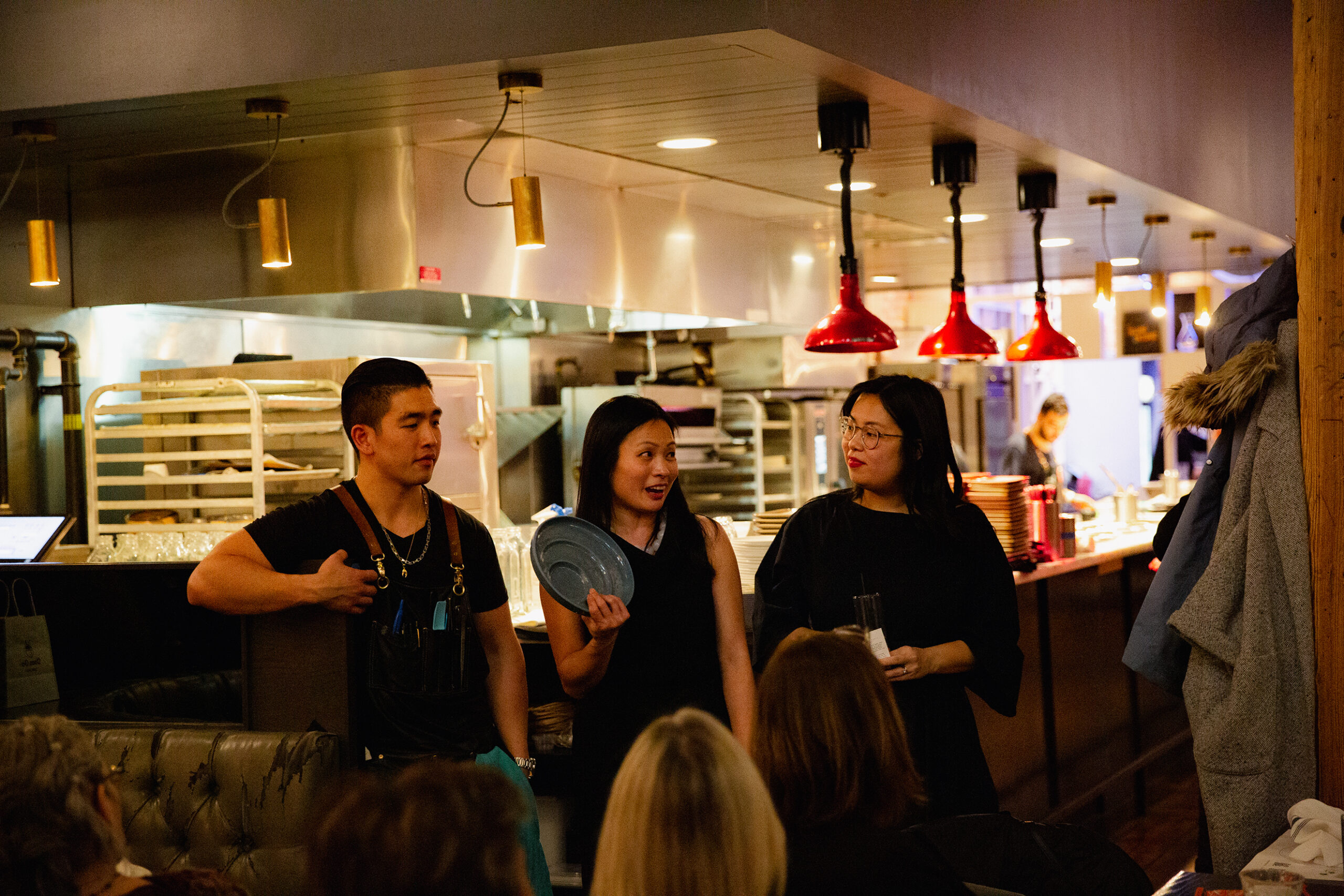
Now is a critical time to understand aging and care, as the number of people who rely on long-term care is rising. The mealtime moment, the designers assert, offers an opportunity to probe how the dignity and humanity of our elders are preserved in assisted living settings.
Huynh noted how, in the current state of play, meals are often presented in a way in which “food doesn’t look like food—especially if you’re coming from a different cultural context” outside the mainstream, with a missing connection to memories, comfort, and belonging. With a design practice that touches on social design, food, community, and cultural care, Huynh thought, “There has to be a better way.”
This is what she and Lee aimed to explore with diners at DesignTO. The designers worked with Chef Eric Chong, the first winner of MasterChef Canada, at his Toronto restaurant, R&D, to put together three courses that considered the sensory experience of a meal, from form and color to texture and taste—all of which can influence a person’s sense of identity and memory.
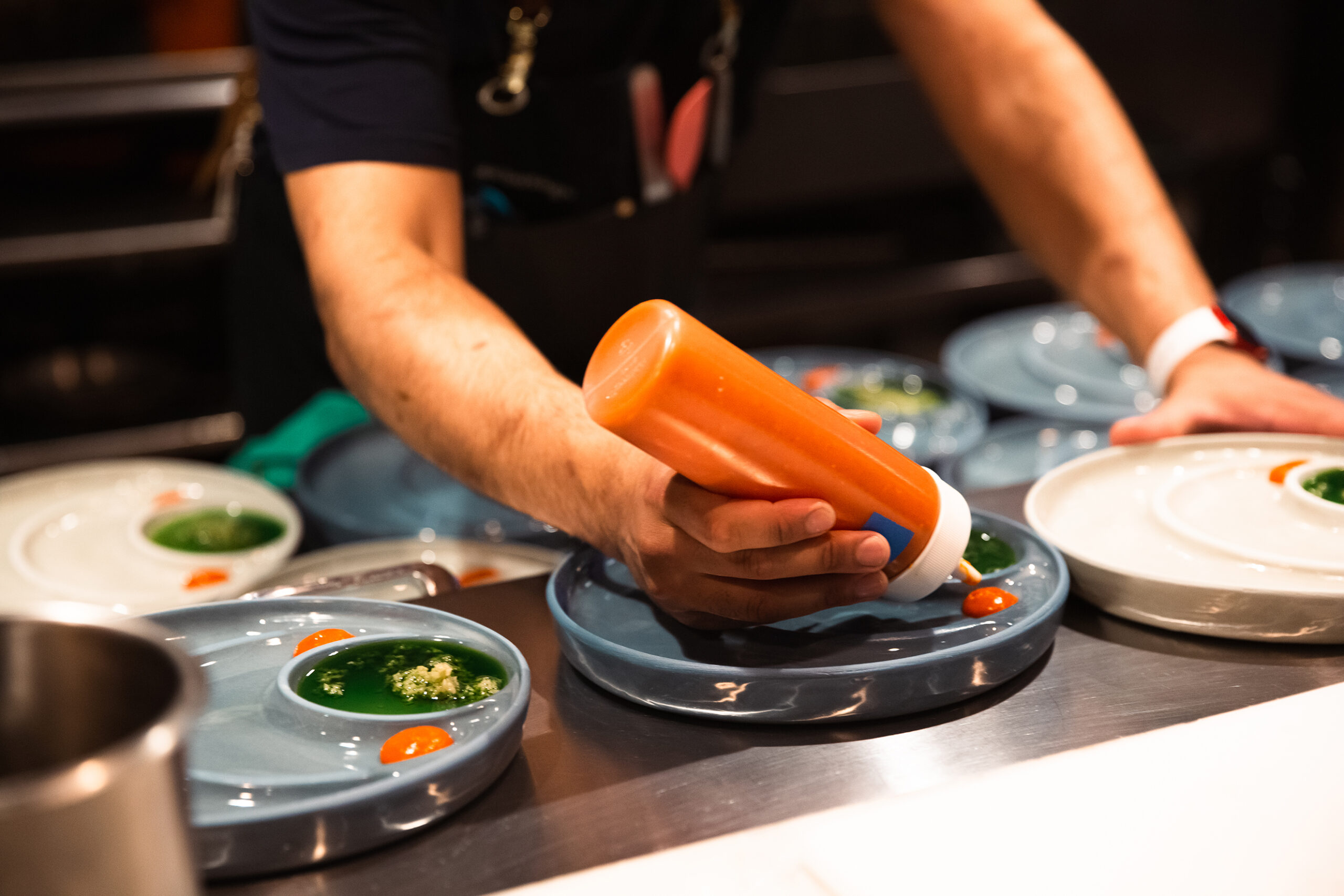
Earlier research Huynh and Lee had undertaken at Dementia Lab, a conference in Belgium that brings together designers, researchers, caregivers, and professionals working with people with dementia, confirmed the designers’ hypothesis that physical attributes of food bring up strong memories and associations. There, they held a workshop with scholars, caregivers, and people with dementia, presenting participants with samples of food packaged without any identifying information.
They asked participants to respond to questions about what they expected the food to taste like, what it reminded them of, and once they tasted it, how their expectations meshed with their experience. Everyone brought to the table their associations with colors and shapes, and how a piece of food might taste and feel in their bodies.
When it came to the challenge of designing with these associations in mind, as well as the constraints of budget, nutrition standards, and medical considerations like food size that define the offerings in care facilities, Chong, who comes from an engineering background, took his charge seriously. “Anyone can make a beautiful plate of food; I want to do this right,” Chong told Huynh and Lee in their first meeting.
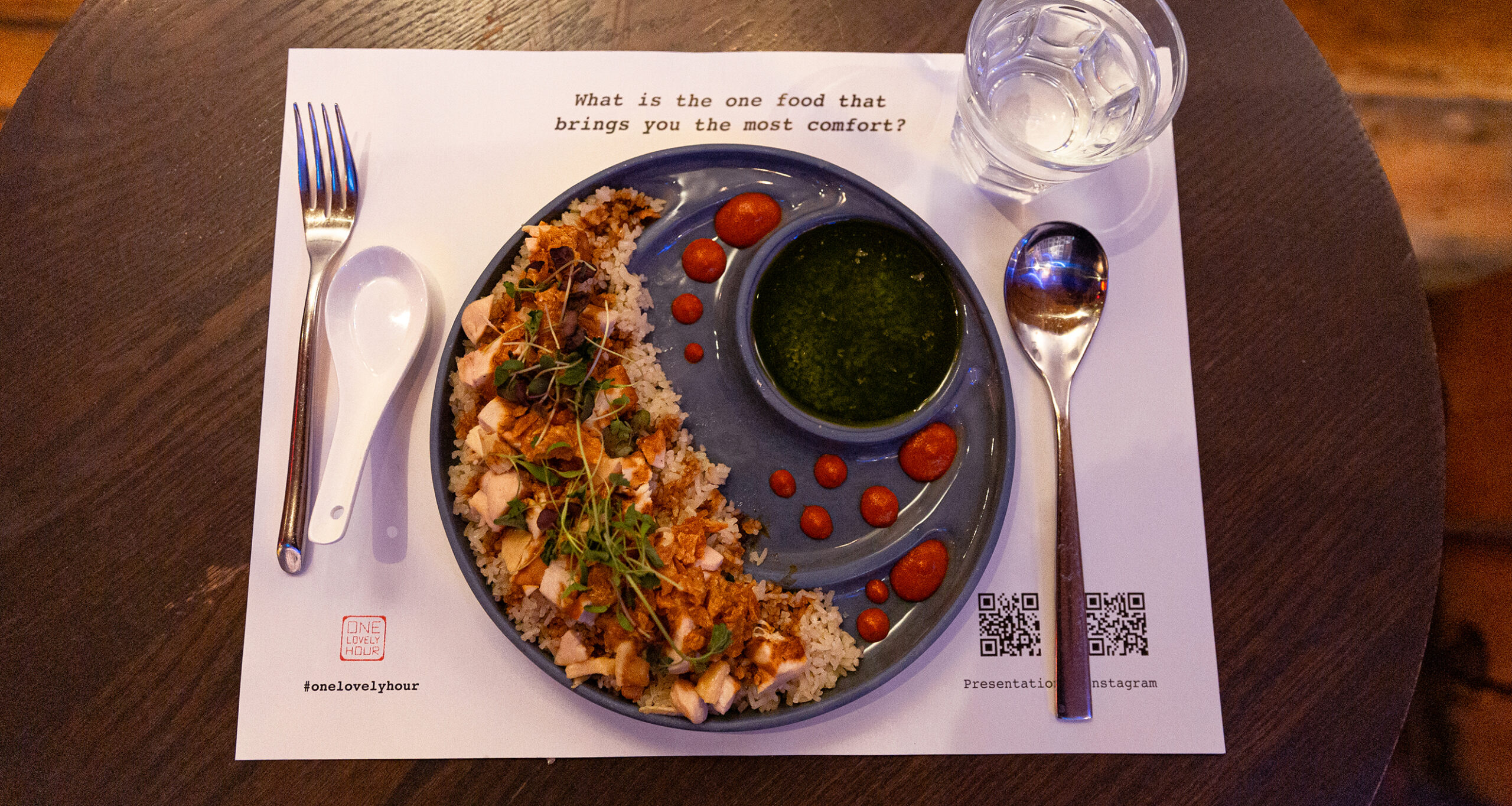
The cuisine of the evening drew from the designers’ and chef’s East Asian backgrounds. The hope, Huynh said, was that this dining experience could be used as proof of concept that could be applied in various ways within different communities.
Meanwhile, Huynh and Lee designed a bowl plate that addressed specific needs for meal service in a care-home setting, with features like lips to aid in scooping for people with limited dexterity, and sections for serving portions. The plates, whose design began on the back of an Air Canada sick bag as the designers returned from the Dementia Lab conference, were realized through ideation, 3D modeling, and 3D printing by Pratt graduate assistant Charlotte Reiter, MID ’24, and then translated into molds and slipcast by an Ontario fabricator.
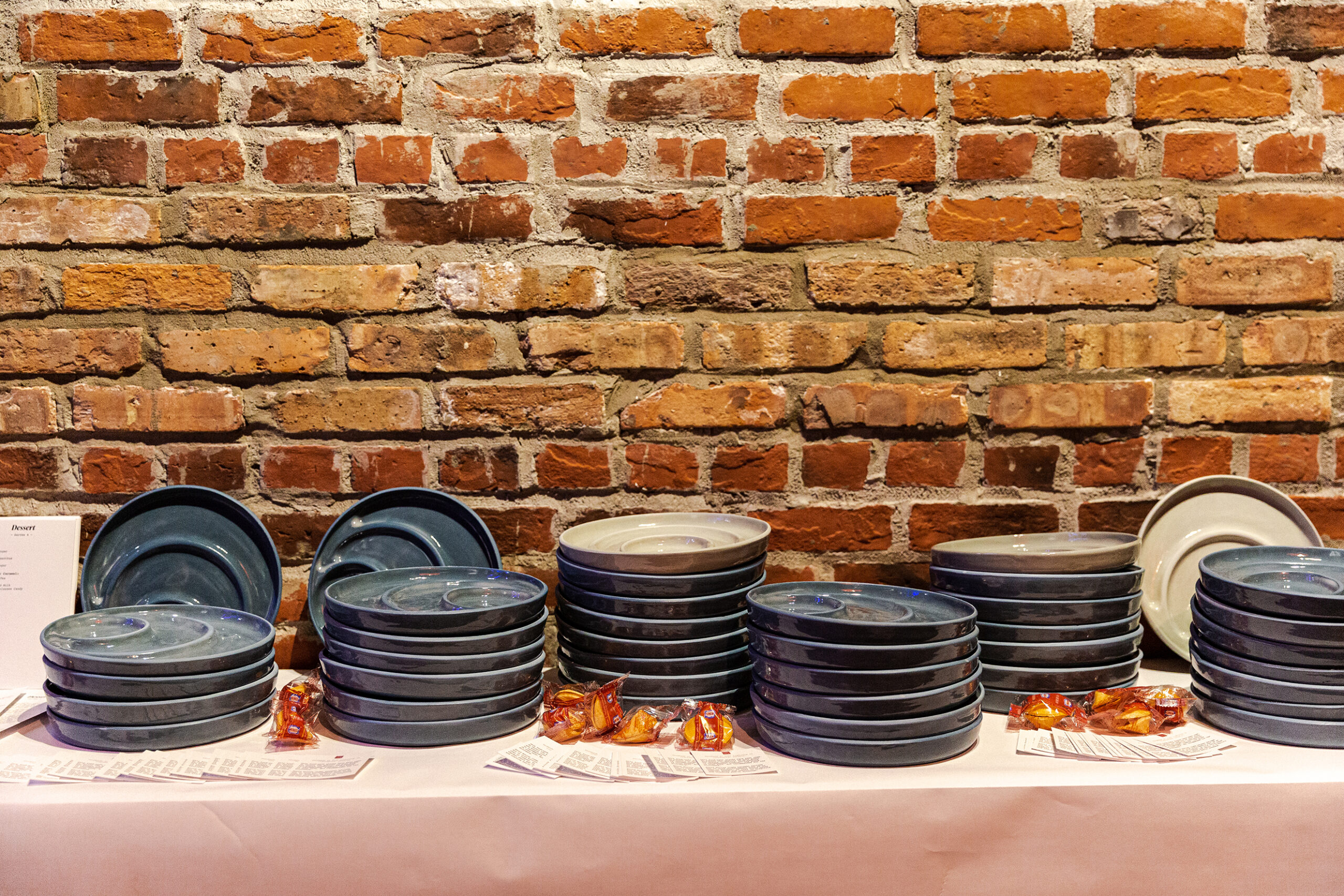
Each place setting at the dinner was complete with a prompt, like “What is the one food that brings you the most comfort?” and “What is the most important consideration to have a ‘one lovely hour’ during mealtime?—as well as booklets for recording responses. (“As design researchers, we couldn’t help ourselves,” Huynh said.) “They are meant to be relatable, future-casting questions, a way for people to see themselves in the discussion,” Huynh remarked. “Imagining ourselves as older adults is something we can all do.”
The feedback from the dinner, along with data from the Dementia Lab workshop, will inform a paper that Huynh and Lee plan to bring back to an academic setting. Meanwhile, the designers will continue to iterate on the plate design and hope to test it directly with people in long-term care.
More dinners may also be on the horizon. “We have already been asked for versions of the dinner experience in other cities,” Huynh shared. “If that happens, we would work with a new chef and their interpretations of long-term care food within the same limitations. I think the constraints can yield endless beautiful outcomes.”
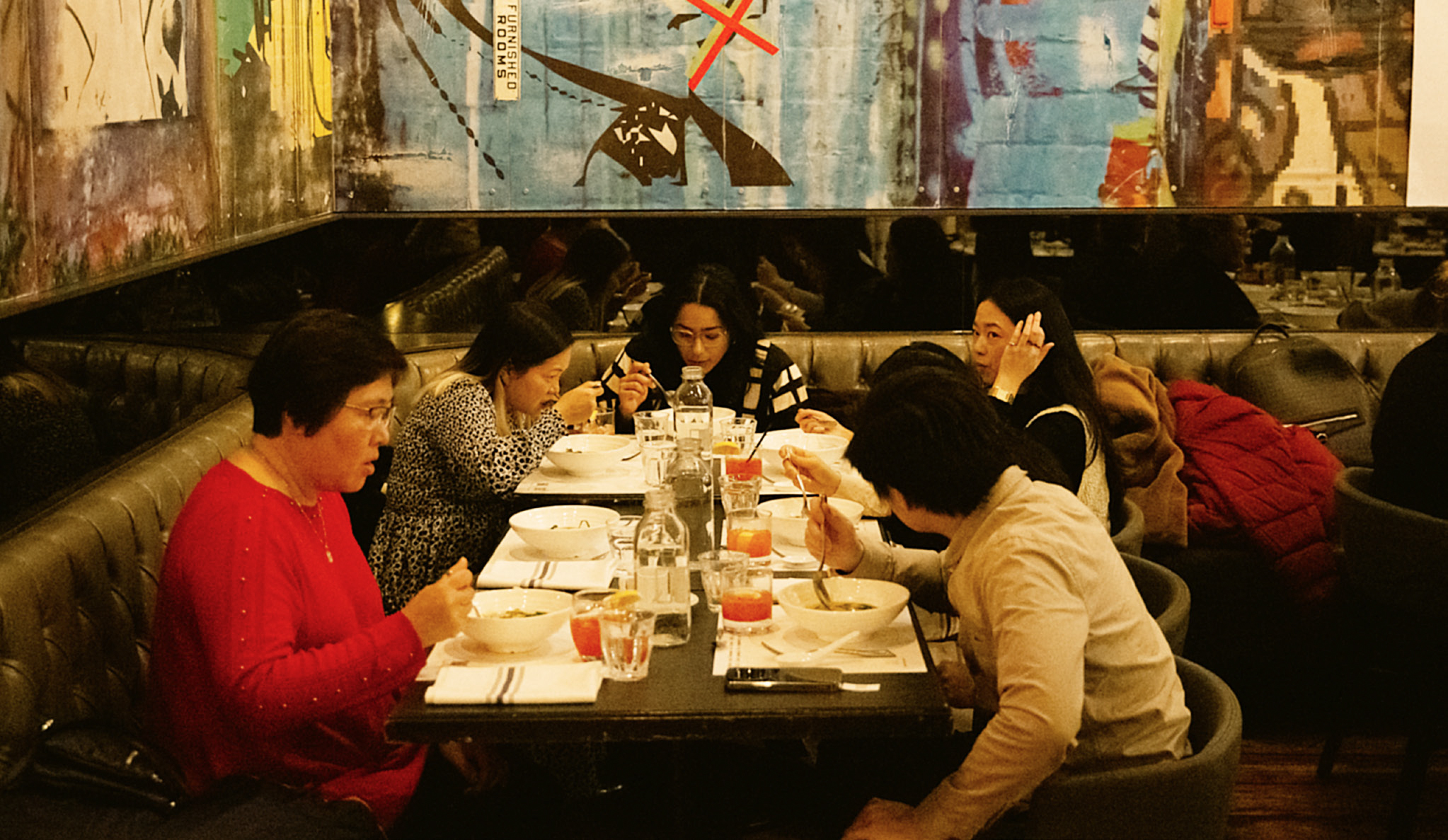
One Lovely Hour reflects many concerns at the heart of Huynh’s design practice. After the dinner, she said, it became clear how much hosting threads through her work as well, including her teaching practice: “Making sure that people are welcomed, have everything that they need, have a literal seat at the table, feel comfortable participating, and have the ability to feel heard—it is the only pathway I see to creating a just future in design: addressing difficult, urgent issues in ways that are accessible to the people we design for.”
For Huynh, food design has been a space to wrestle with those challenges, with new dimensions of opportunity always unfolding. “When food design allowed me to connect my own cultural identity with industrial design, that is when everything clicked for me,” Huynh said. “That was me looking to the past, and now One Lovely Hour allows me to look into the future. The dinner event was surreal. It’s rare that designers get to feel the impact of their work so intimately and all at once. I’m happy to make work again that leads me to things I could have never imagined.”
